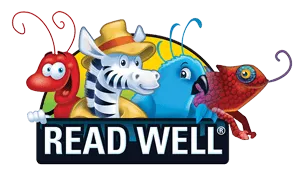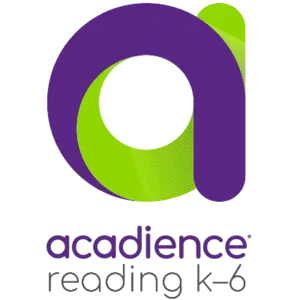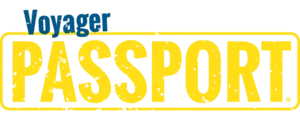Setting the Stage for Success: The Power of Learning Targets
Brian Cagneey, author of The 7 Laws series on personal growth, wrote, “In order to know where you’re headed, you must be aware of your own personal goals.” The same can be said for academic goals. Setting clear goals for learning has huge benefits for both students and teachers.
Learning targets can be used in a variety of settings, including classrooms, schools, and districts. They can be used to guide instruction in all subject areas, and they can be adjusted or revised as needed based on student progress and feedback. When used effectively, learning targets can help create a culture of goal setting and continuous improvement, and can lead to improved student outcomes.
Understanding Learning Targets
Understanding learning targets involves a deep comprehension of what they are, how they are created, and how they can be used to support student learning. Learning targets are specific, measurable statements in student-friendly language describing what students are expected to know, do, or achieve by the end of an activity or unit.
To create effective learning targets, educators typically begin by identifying the key content, skill, or concept students need to achieve. These are then broken down into measurable and achievable learning targets that align with the learning objectives. It is important to note learning objectives are more for the teacher, while the learning targets are for the student. Objectives are often written in a more technical, formal language, whereas learning targets are written using student-friendly language.
Many learning targets are based on Common Core, state, local, or district standards and objectives. For example, if the Common Core standard is “6.RP.3. Use ratio and rate reasoning to solve real-world and mathematical problems, e.g., by reasoning about tables of equivalent ratios, tape diagrams, double number line diagrams, or equations,” the learning target for students might read, “I can explain the relationship between rate, ratio, and percent.” Learners must be able to understand and articulate their own learning goals to be able to reap the benefits.
The Benefits of Using Learning Targets
Using learning targets in the classroom can have numerous benefits for students, teachers, and many others involved in education. Research has shown when students are presented with a learning target at the beginning of a lesson, they benefit greatly from something as simple as a statement of learning or a pre-question to start the lesson.
Improved Student Engagement
Student engagement and student understanding are often two sides of the same coin. When students are engaged with their learning, their retention rates and understanding increase. Depending on how learning targets are written, they can communicate expectations of mental engagement and physical engagement.
For example, Bloom’s Taxonomy includes thought-processing verbs like “define,” “classify,” and “solve” as well as more higher-level learning that involves action verbs like “experiment,” “argue,” and “design.” When a combination of these words are used in learning targets, students are clearly directed about what they need to know and what they need to do to be engaged in learning.
Increased Student Achievement
The ultimate goal of education is student progress and achievement, which can be addressed from the beginning of a lesson. Achievement at the end of a lesson is more obtainable when overtly set at the beginning and routinely monitored and readdressed throughout the lesson.
It can be frustrating for students, just as it is for adults, to be given a task without a clear understanding of what they are trying to achieve. With increased rates of students below grade-level standards in subjects like reading and math, the emphasis on targeted instruction and student achievement is even more important now. Many research-based intervention programs utilize learning targets to build confidence and increase student achievement.
Enhanced Student Ownership of Learning
With improved engagement and an increase in probability for achievement, student learning as a whole becomes a more positive experience. Learning targets provide a sense of clarity and transparency, allowing students to understand the why of a lesson before jumping into the what or the how.
By starting this way, students become empowered to engage in self-assessment and reflective practices, allowing them to monitor their progress and comprehension, rather than relying solely on a teacher’s evaluation at the conclusion of a lesson or unit of study.
Greater School and District Effectiveness
When teachers use learning targets, they can better design and align activities and assessment. Then as classrooms and curriculum are better aligned on a larger scale, schools themselves become more effective. There are many guiding documents and professional development opportunities schools can provide for their educators to learn more about how to better use learning targets in daily teaching.
Daily use of learning targets has the ability to improve educational effectiveness of schools and districts as a whole. This is because school-wide goals and targets are often best incorporated at the classroom level. Teachers and administrators can work together to identify learning targets, ideal methods, and useful resources to achieve those goals.
Improved Communication with Parents
Using daily learning targets has a positive effect not only on students but also on parents and other school leaders, principals, and administrators. While much of the responsibility for a child’s learning feels like it falls on the teacher, there is truly a whole team working toward a child’s academic achievement.
The more a parent can clearly know and understand their child’s learning, the better they can help encourage their student. A clear learning target can also improve communication with other school leaders through things like collaboration with curriculum specialists, horizontal and vertical alignment between grade levels, and district involvement with administrators.
Implementing Learning Targets in the Classroom
Learning Targets by Connie M. Moss and Susan M. Bookhart presents a theory of action for learning targets in the classroom: “The most effective teaching and the most meaningful student learning happen when teachers design the right learning target for today’s lesson and use it along with their students to aim for and assess understanding.” With so much research in favor of learning targets, schools should support educators' efforts through curriculum staff or materials.
Identify the Learning Objectives
Identifying the learning objective is typically the first step for creating an effective learning target. The objective or standard acts as the foundation upon which the learning target is built. Every grade level and every school will have a set of standards they use to guide curriculum development, such as Common Core. Many schools will have some type of curriculum specialist who can support teachers
Once these targets are clearly crafted, they must be clearly communicated to the students. For example, a teacher may verbally express the targets, visually present them on the board, and routinely discuss the targets with students throughout the lesson.
Create a Culture of Goal Setting
Creating a culture of goal setting is a lifelong lesson that will benefit students. By allowing goals to be part of the classroom culture, students are invited to take ownership of their learning. When students know the end goal from the beginning of a lesson, they have a better understanding of what is expected. Therefore, they are better able to mentally process and think critically about how they need to get there.
In 2006, Carol Dweck published, Mindset: The New Psychology of Success: How We Can Learn to Fulfill Our Potential, and it had a huge impact on the education world. Her book helped launch the “growth mindset” concept that found its way into many classrooms. This growth mindset has helped the goal-setting culture by better-fostering a sense of motivation and determination in students as they pursue challenging academic goals.
Incorporate Learning Targets into Lesson Planning
Learning targets can be incorporated into lesson planning in multiple ways. On many lesson plan templates, learning standards and objectives are step one, and identifying learning targets for students are step two. But these learning targets should appear in multiple places as well. Learning targets may appear in the teacher’s copy of the lesson plan, prominently written on a board, on the first or last slide of a presentation of notes, at the top of a student worksheet, and so on.
Monitor Progress Toward Learning Targets
Both teachers and students should be involved in monitoring progress toward learning targets. For example, teachers may create graphs or charts to track student progress on homework or classwork assignments. Likewise, students may do some self-assessment of their own progress toward learning targets with an exit ticket at the end of a lesson.
The exit ticket strategy is a quick, informal assessment for students to complete that not only allows them to reflect on their skills or understanding, but also provides teachers with more data to inform instruction or intervention if necessary.
Adjust Learning Targets as Needed
If learning targets are being regularly monitored, then timely adjustments to those learning targets are also able to take place. Sometimes curriculum or instruction needs modifying or altering, and those changes should be made on more concrete evidence rather than just inferences. Content-focused instruction is crucial, and assessment of learning targets can help ensure curriculum, instructional strategies, and assessment are all aligned.
Assessing Learning Targets
Assessing learning targets is a critical component of the teaching and learning process. It involves not only measuring student progress toward specific learning goals but also using this information to guide instructional decisions. A few key steps teachers can take to effectively assess learning targets include using formative and summative assessments, providing feedback, using data to guide instructional decisions, and involving students in the assessment process.
Use Formative Assessments
Just as learning targets are ongoing expectations for students, formative assessments are ongoing evaluations of those expectations. The purpose of these assessments is to help students and teachers identify areas of strength and growth, monitor progress, and adjust learning or instruction as needed.
Learning targets provide a framework for formative assessments, and teachers can use both to identify areas where students may need additional support during the process rather than come to this realization at the end of a lesson, unit, or year.
Use Summative Tests
Similar to formative assessment, learning targets create a foundation for summative tests as well by defining the specific skills and knowledge students should have learned throughout a lesson, unit, or year. Summative tests provide a way to evaluate how well students have achieved those learning targets.
This is why it is important for assessments to be aligned with the curriculum and standards—to ensure students are not being unintentionally assessed on topics or ideas apart from the original learning goals.
Provide Feedback
It is important to make sure students are receiving regular feedback and sharing assessment results. Sharing the results of assessments, whether formative or summative, help students understand their progress toward achieving the learning goals.
Just as learning targets may be incorporated into each lesson plan or each daily agenda, feedback should also be a regular part of classroom culture. The more students are able to get feedback about the learning targets presented at the beginning, the more likely they will be able to confidently perform on culminating assessments.
Use Data to Guide Instructional Decisions
Learning targets can help everyone in the education world make instructional decisions. Based on the results of learning targets and their assessments, adjustments can be made to learning goals, curriculum, or instruction to better support student learning. Ensuring teachers, curriculum developers, principals, superintendents, school boards, and more have access to this data helps them make instructional decisions on small and larger scales.
Conclusion
Learning targets are more than just a set of goal statements written on the board and glanced over. When implemented and assessed correctly, they have the power to transform student learning. All students, whether on track or behind grade level, can benefit from clear expectations and a classroom culture that focuses on goal setting.
Voyager Sopris Learning’s solutions Read Well® and Voyager Passport® provide systematic and explicit instruction to struggling readers with clearly defined learning targets. Acadience® Reading K–6 can also work alongside these solutions to benchmark and progress monitor students as they work toward their goals.


